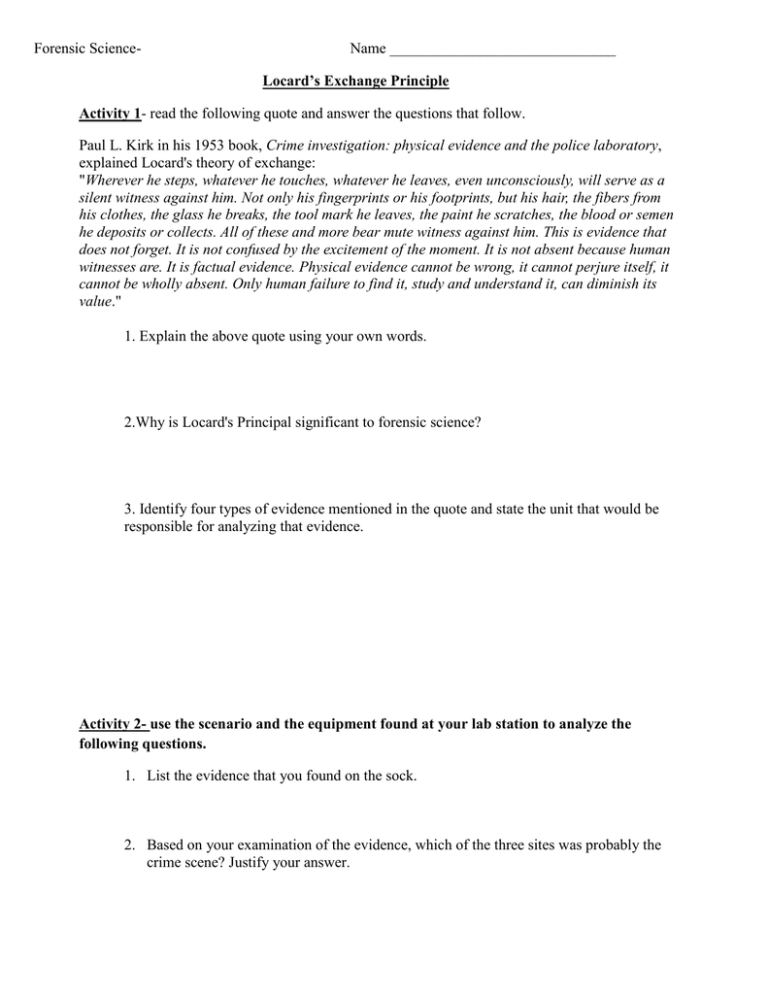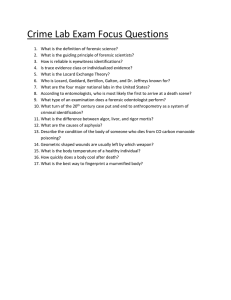Locard's Exchange Principle Worksheet
advertisement

Forensic Science- Name ______________________________ Locard’s Exchange Principle Activity 1- read the following quote and answer the questions that follow. Paul L. Kirk in his 1953 book, Crime investigation: physical evidence and the police laboratory, explained Locard's theory of exchange: "Wherever he steps, whatever he touches, whatever he leaves, even unconsciously, will serve as a silent witness against him. Not only his fingerprints or his footprints, but his hair, the fibers from his clothes, the glass he breaks, the tool mark he leaves, the paint he scratches, the blood or semen he deposits or collects. All of these and more bear mute witness against him. This is evidence that does not forget. It is not confused by the excitement of the moment. It is not absent because human witnesses are. It is factual evidence. Physical evidence cannot be wrong, it cannot perjure itself, it cannot be wholly absent. Only human failure to find it, study and understand it, can diminish its value." 1. Explain the above quote using your own words. 2.Why is Locard's Principal significant to forensic science? 3. Identify four types of evidence mentioned in the quote and state the unit that would be responsible for analyzing that evidence. Activity 2- use the scenario and the equipment found at your lab station to analyze the following questions. 1. List the evidence that you found on the sock. 2. Based on your examination of the evidence, which of the three sites was probably the crime scene? Justify your answer. 3. Why would a CSI use gloves in the collection and handling of trace evidence? 4. A home burglary has occurred. It appears the perpetrator entered after breaking a window. A metal safe had been opened by drilling through its tumblers. A suspect was seen running through the garden. Three suspects were interrogated and their clothing was examined. List at least three examples of evidence that might be found on the suspect. 4. Some examples of evidence are listed below. For each item: A. suggest a possible location where the evidence might have originated . For example, broken glass fragments- headlights from a hit-and run accident. B. Write the unit and subunit that would study the evidence. Example of evidence Possible Location Main Unit Sub-Unit Glass fragment car accident Physical Science Trace Evidence Division Pollen Insects Gun powder or residue Gravel Note








